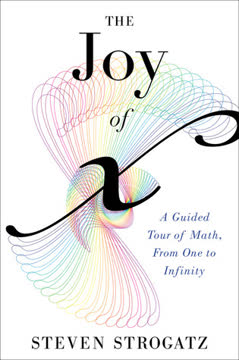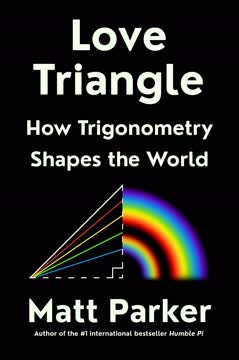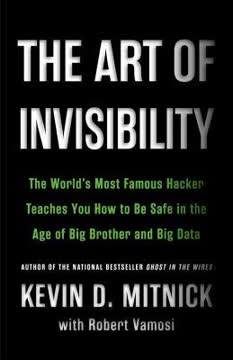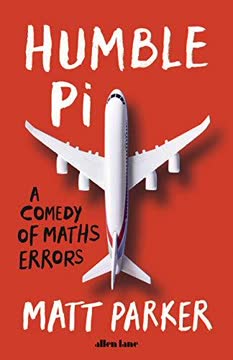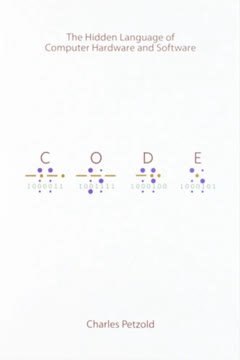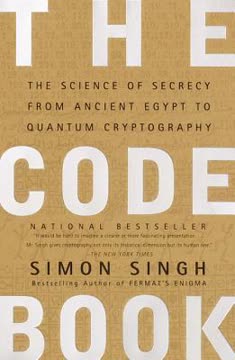मुख्य निष्कर्ष
1. क्रिप्टोग्राफी का विकास: प्राचीन गुप्तलेखन से आधुनिक एन्क्रिप्शन तक
"हजारों वर्षों से, राजा, रानी और सेनापतियों ने अपने राज्यों का शासन और सेनाओं का संचालन करने के लिए प्रभावी संचार पर निर्भर किया है।"
प्राचीन गुप्तलेखन। क्रिप्टोग्राफी, यानी गुप्त लेखन की कला, मानव इतिहास में अत्यंत महत्वपूर्ण रही है। प्रारंभिक गुप्तलेखन में शामिल थे:
- प्रतिस्थापन गुप्तलेखन: प्रत्येक अक्षर को किसी अन्य अक्षर से बदलना
- स्थानांतरण गुप्तलेखन: अक्षरों के क्रम को पुनः व्यवस्थित करना
- स्टेगनोग्राफी: संदेश के अस्तित्व को छुपाना
प्रौद्योगिकी में प्रगति। जैसे-जैसे तकनीक विकसित हुई, वैसे-वैसे क्रिप्टोग्राफिक विधियाँ भी उन्नत होती गईं:
- यांत्रिक उपकरण: सिफर डिस्क और रोटर मशीनें
- कंप्यूटर आधारित एन्क्रिप्शन: DES और अन्य सममित एल्गोरिदम
- आधुनिक क्रिप्टोग्राफी: सार्वजनिक कुंजी प्रणाली और क्वांटम एन्क्रिप्शन
क्रिप्टोग्राफी का विकास कोड बनाने वालों और कोड तोड़ने वालों के बीच निरंतर संघर्ष से प्रेरित रहा है, जहाँ हर नई एन्क्रिप्शन तकनीक के सामने नई डिक्रिप्शन तकनीकें आईं।
2. जिमरमैन टेलीग्राम: क्रिप्टोग्राफी ने प्रथम विश्व युद्ध को कैसे बदला
"यदि दुश्मन हर रेडियो संदेश को पकड़ सकता है, तो क्रिप्टोग्राफरों को ऐसे तरीके खोजने होंगे जिससे वे इन संदेशों को समझ न सकें।"
राजनयिक भूल। जिमरमैन टेलीग्राम एक गुप्त राजनयिक संदेश था, जिसमें जर्मनी और मेक्सिको के बीच सैन्य गठबंधन का प्रस्ताव था, यदि अमेरिका प्रथम विश्व युद्ध में शामिल होता।
क्रिप्टोग्राफिक विफलता। यह टेलीग्राम ब्रिटिश खुफिया द्वारा पकड़ा और डिक्रिप्ट किया गया, जिसके परिणामस्वरूप:
- जर्मन इरादों का खुलासा
- अमेरिका में जर्मनी-विरोधी भावना में वृद्धि
- अमेरिका का प्रथम विश्व युद्ध में प्रवेश
इस घटना ने युद्ध और कूटनीति में सुरक्षित संचार की महत्ता को उजागर किया और दिखाया कि क्रिप्टोग्राफी इतिहास के प्रवाह को कैसे बदल सकती है।
3. एनीग्मा मशीन: जर्मन एन्क्रिप्शन और मित्र राष्ट्रों के कोड तोड़ने के प्रयास
"एनीग्मा मशीन इतनी सुरक्षित थी कि यह NSA की कोड तोड़ने की क्षमता से परे एक एन्क्रिप्शन मानक प्रदान कर सकती थी।"
यांत्रिक चमत्कार। एनीग्मा मशीन एक जटिल इलेक्ट्रो-मैकेनिकल उपकरण था, जिसका उपयोग नाजी जर्मनी ने द्वितीय विश्व युद्ध के दौरान सैन्य संचार को एन्क्रिप्ट करने के लिए किया।
मित्र राष्ट्रों के प्रयास। एनीग्मा कोड तोड़ने में शामिल थे:
- पोलिश गणितज्ञ: एनीग्मा को समझने में प्रारंभिक सफलता
- ब्रिटिश कोडब्रेकर्स, ब्लेचली पार्क में: बॉम्बे मशीन का विकास
- एनीग्मा मशीनों और कोडबुक्स का कब्जा: महत्वपूर्ण खुफिया जानकारी प्रदान करना
एनीग्मा संदेशों की सफल डिक्रिप्शन ने मित्र राष्ट्रों को महत्वपूर्ण खुफिया जानकारी दी, जिसने द्वितीय विश्व युद्ध के परिणाम को गहराई से प्रभावित किया और अनगिनत जानें बचाईं।
4. एलन ट्यूरिंग की सफलता: एनीग्मा को तोड़ना और कंप्यूटर विज्ञान की शुरुआत
"ट्यूरिंग का कार्य उनके सबसे प्रसिद्ध पेपर 'ऑन कम्प्यूटेबल नंबरस' में परिणत हुआ, जो 1937 में प्रकाशित हुआ।"
कोड तोड़ने का प्रतिभाशाली। एलन ट्यूरिंग ने एनीग्मा कोड तोड़ने में महत्वपूर्ण योगदान दिया:
- बॉम्बे का विकास: एनीग्मा सेटिंग्स खोजने के लिए एक इलेक्ट्रोमैकेनिकल उपकरण
- पोलिश विधियों में सुधार: डिक्रिप्शन की दक्षता बढ़ाना
- सांख्यिकीय विश्लेषण का उपयोग: संभावना सिद्धांत को कोड तोड़ने में लागू करना
कंप्यूटर विज्ञान के पिता। ट्यूरिंग के एनीग्मा पर कार्य ने जन्म दिया:
- सार्वभौमिक ट्यूरिंग मशीन की अवधारणा: आधुनिक कंप्यूटरों का सैद्धांतिक आधार
- प्रारंभिक कंप्यूटरों का विकास: कोलोसस, जो अन्य जर्मन कोड तोड़ने में उपयोग हुआ
- कृत्रिम बुद्धिमत्ता की नींव: मशीन बुद्धिमत्ता के लिए ट्यूरिंग टेस्ट
ट्यूरिंग का यह क्रांतिकारी कार्य न केवल युद्ध जीतने में मददगार रहा, बल्कि आधुनिक कंप्यूटर विज्ञान और कृत्रिम बुद्धिमत्ता की नींव भी रखी।
5. नवाजो कोड टॉकर: द्वितीय विश्व युद्ध में अटूट भाषाई एन्क्रिप्शन
"नवाजो अमेरिका की एकमात्र जनजाति है जिस पर पिछले बीस वर्षों में जर्मन छात्र छाए नहीं हैं।"
भाषाई गुप्तलेखन। अमेरिकी मरीन कॉर्प्स ने द्वितीय विश्व युद्ध के दौरान नवाजो भाषा बोलने वालों को भर्ती किया, जिन्होंने अपनी जटिल भाषा पर आधारित एक कोड विकसित किया।
अटूट कोड। नवाजो कोड प्रभावी था क्योंकि:
- जटिल भाषा संरचना: गैर-देशजों के लिए समझना कठिन
- लिखित रूप का अभाव: दुश्मनों के लिए अध्ययन के लिए कोई दस्तावेज नहीं
- विशेष सैन्य शब्दावली: नवाजो शब्दों का सैन्य संदर्भ में उपयोग
नवाजो कोड टॉकरों ने प्रशांत क्षेत्र में मित्र राष्ट्रों के संचार को सुरक्षित रखने में महत्वपूर्ण भूमिका निभाई, जिससे भाषाई विविधता की शक्ति क्रिप्टोग्राफी में सिद्ध हुई।
6. प्राचीन लिपियों का डिक्रिप्शन: हाइरोग्लिफिक्स और लिनियर बी को समझना
"डिक्रिप्शन विद्वता की सबसे शानदार उपलब्धियों में से एक है।"
रोसेटा स्टोन। मिस्री हाइरोग्लिफिक्स के डिक्रिप्शन में मदद मिली:
- रोसेटा स्टोन की खोज: हाइरोग्लिफिक्स, डेमोटिक और ग्रीक में समान पाठ प्रदान करना
- जीन-फ्रांस्वा शैम्पोलियन का कार्य: हाइरोग्लिफिक्स की ध्वन्यात्मक प्रकृति को पहचानना
लिनियर बी का रहस्य। लिनियर बी, एक प्राचीन क्रीटियन लिपि, का डिक्रिप्शन:
- माइकल वेंट्रिस: एक शौकिया भाषाविद जिसने कोड तोड़ा
- लिनियर बी को ग्रीक की प्रारंभिक रूप में पहचानना
- जॉन चैडविक के साथ सहयोग से डिक्रिप्शन पूरा करना
इन प्राचीन लिपियों के डिक्रिप्शन ने खोई हुई सभ्यताओं की झलक दी और भाषाई तथा क्रिप्टोग्राफिक विश्लेषण की शक्ति को दर्शाया।
7. कुंजी वितरण समस्या: सममित एन्क्रिप्शन की सबसे बड़ी कमजोरी
"दो लोग जब तक एक गुप्त (एन्क्रिप्टेड संदेश) का आदान-प्रदान नहीं कर सकते, तब तक उनके पास पहले से ही एक गुप्त (कुंजी) होना आवश्यक है।"
सममित एन्क्रिप्शन। पारंपरिक एन्क्रिप्शन विधियों में दोनों पक्षों के पास एक समान गुप्त कुंजी होनी चाहिए, जिससे संदेश एन्क्रिप्ट और डिक्रिप्ट हो सके।
कुंजी वितरण की चुनौतियाँ:
- सुरक्षित कुंजी आदान-प्रदान: कुंजी को सुरक्षित रूप से भेजना कठिन
- कुंजी प्रबंधन: बड़ी संख्या में कुंजियों को संग्रहित और अपडेट करना जटिल
- विस्तार की समस्या: बड़े नेटवर्क में कुंजियों का प्रबंधन मुश्किल
इलेक्ट्रॉनिक संचार के विस्तार के साथ कुंजी वितरण समस्या और भी महत्वपूर्ण हो गई, जिससे सममित एन्क्रिप्शन के व्यावहारिक उपयोग पर सीमाएं आईं।
8. सार्वजनिक कुंजी क्रिप्टोग्राफी: कुंजी वितरण का क्रांतिकारी समाधान
"डिफी ने एक नए प्रकार का सिफर तैयार किया था, जिसमें एक असममित कुंजी शामिल थी।"
परिवर्तनकारी सोच। व्हिटफील्ड डिफी और मार्टिन हेलमैन द्वारा विकसित सार्वजनिक कुंजी क्रिप्टोग्राफी ने एन्क्रिप्शन में क्रांति ला दी:
- सुरक्षित कुंजी आदान-प्रदान की आवश्यकता समाप्त की
- एन्क्रिप्शन और डिक्रिप्शन के लिए अलग-अलग कुंजियाँ उपयोग कीं
- पूर्व साझा गुप्त के बिना सुरक्षित संचार संभव बनाया
मुख्य अवधारणाएँ:
- सार्वजनिक कुंजी: एन्क्रिप्शन के लिए स्वतंत्र रूप से वितरित की जाती है
- निजी कुंजी: डिक्रिप्शन के लिए गुप्त रखी जाती है
- एकतरफा फलन: गणितीय क्रियाएँ जो करना आसान, पर उलटना कठिन होती हैं
इस सफलता ने कुंजी वितरण की समस्या का समाधान किया और आधुनिक डिजिटल संचार के लिए मार्ग प्रशस्त किया।
9. RSA एल्गोरिदम: आधुनिक सुरक्षित संचार की नींव
"RSA अभेद्य था।"
क्रांतिकारी एल्गोरिदम। रिवेस्ट, शमीर और एडलेमैन द्वारा विकसित RSA एल्गोरिदम सबसे व्यापक रूप से उपयोग किया जाने वाला सार्वजनिक कुंजी क्रिप्टोसिस्टम बन गया।
मुख्य विशेषताएँ:
- बड़े अभाज्य संख्याओं के गुणनखंडों को निकालने की कठिनाई पर आधारित
- एन्क्रिप्शन और डिजिटल हस्ताक्षर दोनों प्रदान करता है
- सुरक्षा को बढ़ाने के लिए कुंजी आकार को बढ़ाया जा सकता है
व्यापक प्रभाव:
- सुरक्षित ई-कॉमर्स और ऑनलाइन बैंकिंग को सक्षम बनाया
- इंटरनेट पर सुरक्षित संचार को संभव बनाया
- कई आधुनिक क्रिप्टोग्राफिक प्रोटोकॉल की नींव बना
RSA एल्गोरिदम की गणितीय सुंदरता और व्यावहारिक उपयोगिता ने इसे सुरक्षित डिजिटल संचार का आधार बनाया, जिससे इंटरनेट और ई-कॉमर्स का विकास संभव हुआ।
अंतिम अपडेट:
FAQ
What's The Code Book about?
- Exploration of Cryptography's History: The Code Book by Simon Singh explores the evolution of cryptography from ancient Egypt to modern quantum cryptography, highlighting the ongoing battle between code-makers and codebreakers.
- Key Figures and Events: The book features significant figures like Mary Queen of Scots, Alan Turing, and pivotal events such as the breaking of the Enigma cipher during WWII.
- Impact on Society: Singh emphasizes how cryptography has influenced historical events, wars, and political intrigue, showcasing its importance in maintaining secrecy and security in communication.
Why should I read The Code Book?
- Engaging Storytelling: Simon Singh combines scientific explanation with captivating storytelling, making complex topics accessible and enjoyable for readers.
- Rich Historical Context: The book provides a thorough historical context, allowing readers to understand the significance of cryptography in shaping world events.
- Relevance to Modern Issues: With the rise of digital communication and privacy concerns, the themes in The Code Book are more relevant than ever, helping readers navigate contemporary security issues.
What are the key takeaways of The Code Book?
- Evolution of Codes and Ciphers: The book illustrates the ongoing evolution of codes and ciphers, likened to an arms race between codemakers and codebreakers.
- Importance of Key Management: Singh emphasizes the significance of key management in cryptography, particularly in the context of the Vigenere cipher and the onetime pad.
- Cryptography's Role in History: Cryptography has played a crucial role in historical events, influencing battles, political decisions, and even the outcomes of wars.
What are the best quotes from The Code Book and what do they mean?
- "Nothing is as exciting as a secret.": This quote encapsulates the allure of cryptography and the human fascination with secrets, reflecting the motivation behind developing codes and ciphers.
- "The urge to discover secrets is deeply ingrained in human nature.": Singh highlights the fundamental human desire to uncover hidden knowledge, driving both the creation and breaking of cryptographic systems.
- "The history of codes is so inordinately rich.": This quote emphasizes the depth and complexity of cryptographic history, suggesting that understanding it can provide valuable insights into human behavior and societal developments.
How does Simon Singh explain the cipher of Mary Queen of Scots in The Code Book?
- Mary's Use of Ciphers: Singh details how Mary Queen of Scots used ciphers to communicate with conspirators, believing her messages were secure.
- Walsingham's Codebreaking: The book describes Sir Francis Walsingham's efforts to intercept and decipher Mary's letters, showcasing early codebreakers' skills.
- Impact of Cipher Strength: Singh illustrates how the strength of a cipher can determine the fate of individuals and nations, as seen in Mary's case.
What is the significance of the Vigenere cipher in The Code Book?
- Polyalphabetic Nature: The Vigenere cipher introduced a polyalphabetic approach to encryption, making it more secure than monoalphabetic ciphers.
- Babbage's Breakthrough: Singh highlights Charles Babbage's successful cryptanalysis of the Vigenere cipher, marking a pivotal moment in cryptography.
- Foundation for Future Ciphers: The Vigenere cipher laid the groundwork for future cryptographic systems, influencing the design of more advanced ciphers.
How did the Allies break the Enigma cipher according to The Code Book?
- Polish Contributions: Polish cryptanalysts, particularly Marian Rejewski, made significant early breakthroughs in understanding the Enigma's mechanics.
- British Efforts at Bletchley Park: The British, led by figures like Alan Turing, developed bombes to automate the process of finding the daily keys used in the Enigma.
- Espionage and Intelligence: The capture of codebooks and insights from spies provided critical information that aided in breaking the cipher.
What is public key cryptography as explained in The Code Book?
- Asymmetric Key System: Public key cryptography uses two keys: a public key for encryption and a private key for decryption, allowing secure communication without prior key exchange.
- Key Distribution Problem Solved: This method eliminates the need for secure key distribution, a significant challenge in traditional symmetric encryption.
- RSA Algorithm: The book details the RSA algorithm, foundational to modern secure communications, illustrating the principles of public key cryptography.
How does the RSA algorithm work in The Code Book?
- Choosing Prime Numbers: The RSA algorithm begins with selecting two large prime numbers, p and q, which are multiplied to produce N, part of the public key.
- Public and Private Keys: A public key is created using N and another number, e, while the private key, d, is derived from these values and kept secret.
- Encryption and Decryption: To encrypt a message, the sender computes the ciphertext using the formula C = M^e (mod N), and the recipient decrypts it using their private key.
What is the significance of the Diffie-Hellman-Merkle key exchange in The Code Book?
- Key Exchange Method: The Diffie-Hellman-Merkle key exchange allows two parties to securely share a secret key over a public channel.
- Foundation for Public Key Cryptography: This key exchange laid the groundwork for public key cryptography by demonstrating that secure key distribution is possible.
- Real-World Applications: The method is widely used in secure communication protocols, including SSL/TLS for web security.
How does The Code Book address modern cryptography?
- Relevance of Encryption Today: Singh discusses the increasing importance of cryptography in the digital age, where information security is paramount.
- Quantum Cryptography: The book explores the emerging field of quantum cryptography, which promises to revolutionize secure communication.
- Balancing Privacy and Security: Singh raises critical questions about the balance between individual privacy and national security in modern cryptography.
How does The Code Book relate to the future of privacy?
- Emerging Technologies: The book discusses advancements in cryptography, such as quantum cryptography, which promise to enhance privacy.
- Public Awareness: Singh emphasizes the importance of public understanding of cryptography and its implications for privacy.
- Policy Implications: The future of privacy will depend on how governments regulate encryption technologies, balancing security measures and individual rights.
समीक्षाएं
द कोड बुक को क्रिप्टोग्राफी के इतिहास के रूप में बेहद रोचक और सरल समझाने वाली पुस्तक के रूप में सराहा गया है। पाठक सिंह की इस कला की प्रशंसा करते हैं कि वे जटिल विषयों को इतनी स्पष्टता से समझाते हैं कि तकनीकी विवरण और इतिहास की दिलचस्प कहानियाँ सहजता से एक-दूसरे में घुल-मिल जाती हैं। यह पुस्तक प्राचीन गुप्त लिपियों से लेकर आधुनिक एन्क्रिप्शन तक के सफर को समेटे हुए है, जिसमें युद्धकालीन कोड तोड़ने की तकनीकें और क्वांटम क्रिप्टोग्राफी भी शामिल हैं। कई समीक्षकों ने इसे अप्रत्याशित रूप से मनोरंजक और ज्ञानवर्धक पाया, हालांकि कुछ ने इसकी प्रकाशित तिथि (2000) को एक मामूली कमी के रूप में बताया। कुल मिलाकर, यह पुस्तक उन सभी के लिए अत्यंत उपयोगी है जो कोड, इतिहास या गणित में रुचि रखते हैं।
Similar Books
